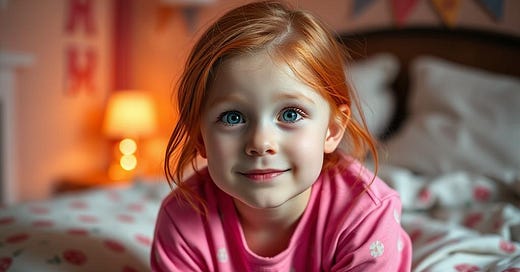I was a red-headed child. I had the kind of hair that grown-ups adored, and children ridiculed. Not auburn or strawberry blond. Bright red-ish orange. I was carrot top. Little Orphan Annie, Fire Engine, Pipi Longstocking. Little Red, The nicknames never really troubled me. What baffled me about being a redhead was the fashion restriction. I was not supposed to wear pink or purple or red, because those colors clashed with my hair. I took this rule very seriously, but I did not understand it. I looked up the word ‘clash’ in the dictionary, but I just didn’t get it. I understood that some musical notes blended harmoniously, and other combinations created discord. I could hear this in music, but I just could not see the clash of my pink pajamas with my red hair. In the fifth grade, I checked out a book on color from my school library, and although I learned some very interesting things about the physics of light, and the art of mixing pigment, I was disappointed that there was nothing about clashing colors anywhere in the book. Miss Matsumoto, our school librarian noticed me studying intensely the color wheel in this book, and she came over to talk to me about it. I told her I was trying to see which colors clashed. Miss Matsumoto told me that colors clashed if they were too close to each other on the wheel. The ones opposite each other (e.g., yellow and violet) were complimentary, like playing thirds on a piano. Putting side-by-side colors together was like playing side-by-side notes on the piano together. I understood this; I just couldn’t see it. For me, the orange and the red looked much better together than the sound of a C and a D played simultaneously.
One day, as we walked past flowers that lined the walkway at Aiea High School, my friend Beth made the observation that flowers never clash – you can put any colors together in a flower garden and it’s always beautiful. This observation astonished and comforted me.
My color clash problem was solved in 1966, when Seventeen Magazine presented the model Twiggy, wearing a bright pink-and-orange paisley dress. I had been trying to make myself see a slash for years, and now it occurred to me that this was all a matter of preference. The clash did not exist in the colors, but in the people who looked at the colors. I’m not sure whether any of you, dear readers, recognizes this as an earth-shattering insight, but at age 14, this realization rocked my world. IN February of 2024, I wrote about a related insight I had had just a few months before, https://marshawalton.substack.com/p/discovering-beauty-and-developing
The impact of this insight on my fashion choices paled in comparison to its impact on my approach to life. A book was not interesting or boring; it was I who was interested or bored. I did a lot of thought experiments testing the limits of this. The saltiness, for example, really did appear to be in the food, not in my tongue. But my father preferred much more salt than I preferred, so maybe I had to account for both features of the external world and internal qualities of the perceiver.
I know now that what puzzled me mightily between the ages of 10 and 13 were questions that define branches of philosophy and sub-disciplines of psychology. This is why I listen to children. Children concern themselves with important questions. Few things in life are more gratifying than hearing about their puzzlement.






Fascinating observations. Your redhead vanished in adulthood??